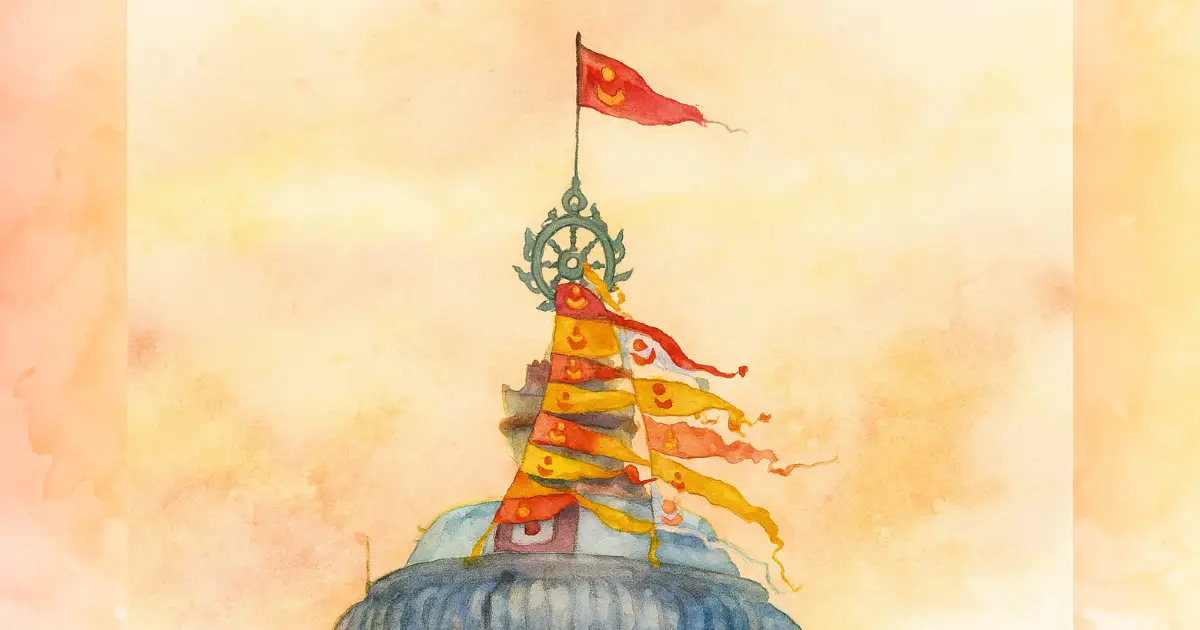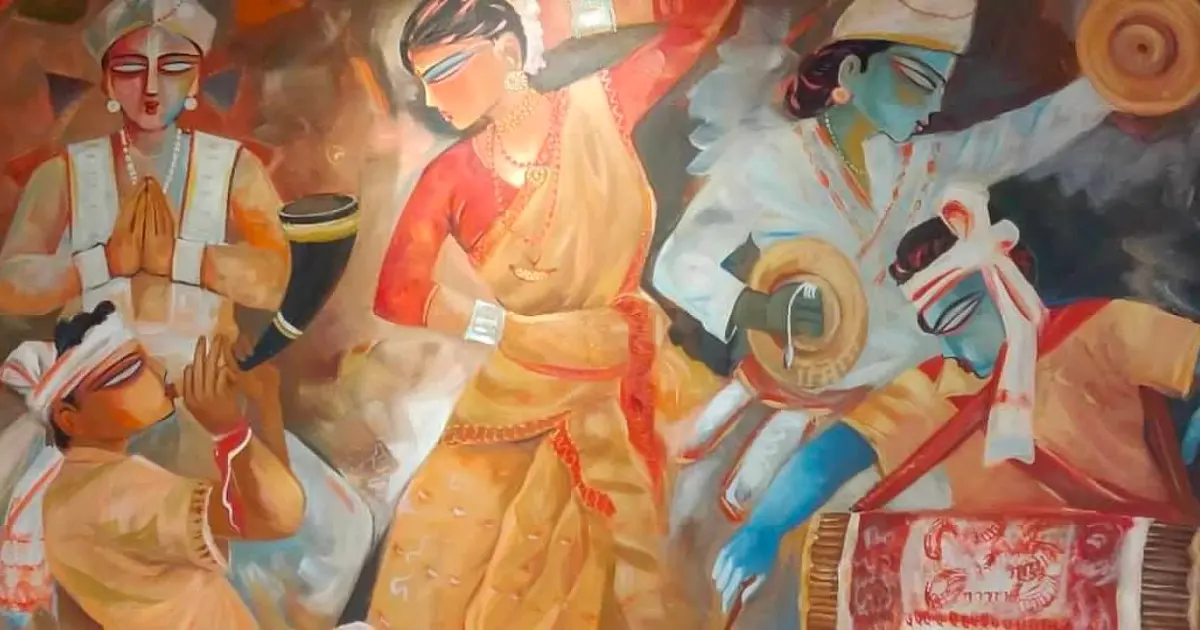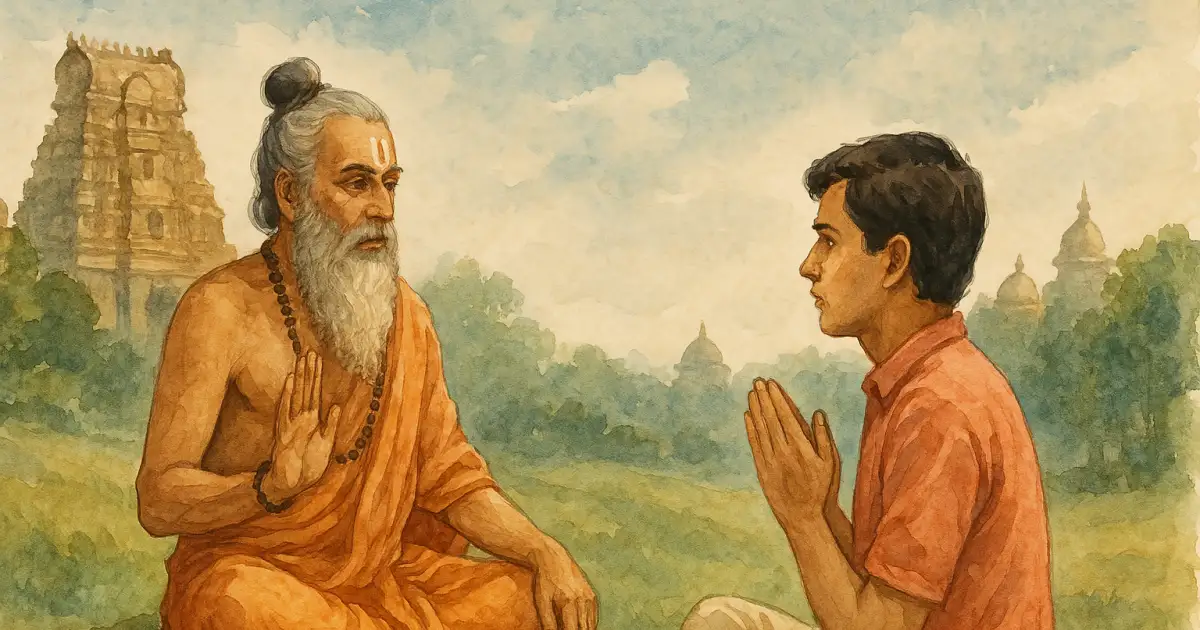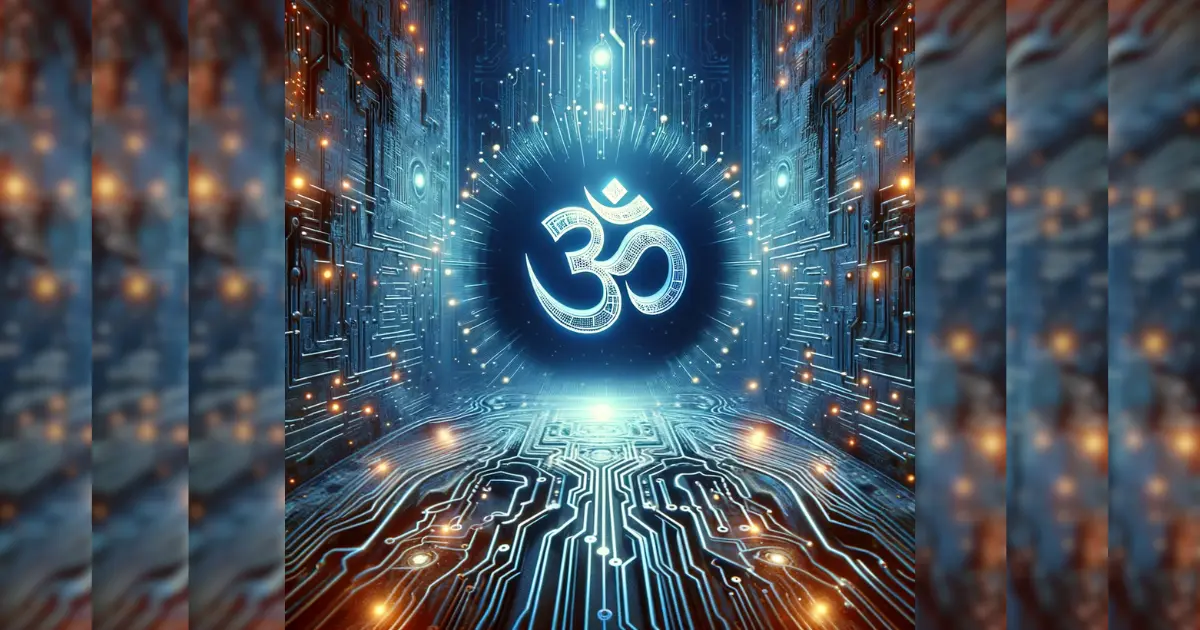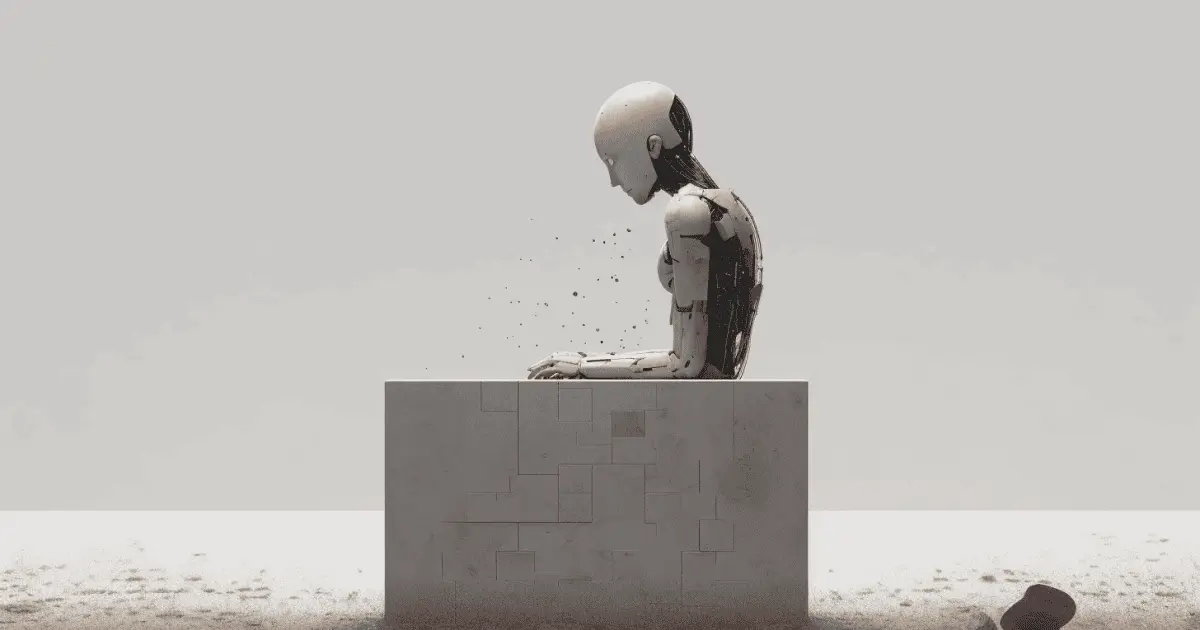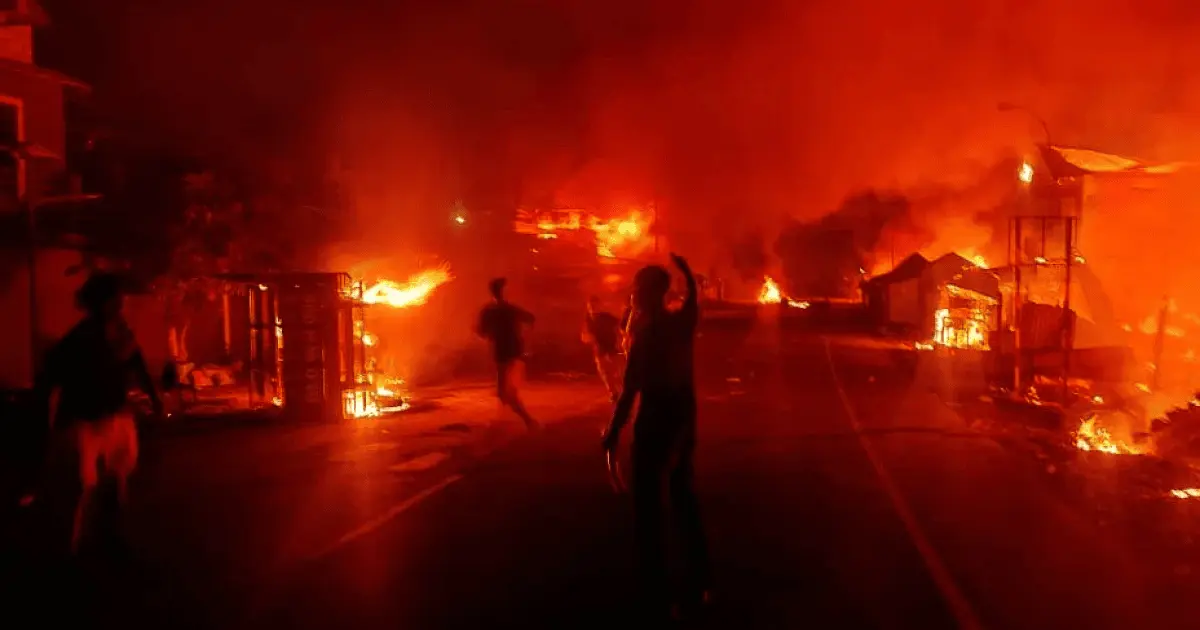Legends
The temple is named after the wife of King Indrayumna, named Guṇḍicā who considered the Lord as her son. Furthermore, the assimilation of Nīlamādhava with Lord Jagannātha is considered a remarkable feature in Odisha Vaiśnavism. In the Śabara language, ’Kun’ means ’He’ and ’Dījā’ mean ‘stem of a tree’. It is believed Lord Jagannātha wanted to shift to a greater temple, and that is how the current temple of Jagannātha came into its existence. But before shifting to a greater abode, Lord Jagannātha promised that he would visit his birthplace once every year. The Lord also assured that the Guṇḍicā temple will never lose its prominence.
Viśvakarmā, in the form of the old carpenter, laid one condition before carving the idols: that no one should enter the temple for the span of 21 days while he was working. This was not duly honoured by the King. On the 21st day, the king opened the gates out of restlessness, as he could not hear any sound coming from the other side. Due to this, the images remained incomplete. However, a divine voice then revealed to the King that the deities had assumed their forms according to their own will.
The Mā Ardhaśinī temple is situated in the middle of the Grand Road at Balagandi Square. She is said to be the ‘māsi mā’ of Lord Jagannātha as she drank up half the seawater when Puri was flooded once, and thus, saved Puri from drowning. The Lord stops by here on his way back to Puri from Guṇḍicā every year.
Sālabega, a devout follower of Lord Jagannātha, was born to a Mughal subedar and a Hindu Brāhmin widow in Odisha. Once Sālabega embarked upon a journey to Puri to witness the grand Ratha Yātrā. During this journey, he fell seriously ill and feared that he would be unable to reach Puri in time for the festival. Immersed in doubt of missing the Ratha Yātrā, Sālabega prayed fervently to Lord Jagannātha, expressing his longing to see his beloved Lord. It is believed that Lord Jagannātha was moved by Sālabega’s devotion, and he miraculously halted his chariot at a place named ‘Balagandi Chaka’. To this day, the chariot of Lord Jagannātha is traditionally stopped for a few moments near the spot where Sālabega’s samādhi (memorial) is located, in respect of his unwavering devotion.
Duration of Celebrations
The festival spans a total of ten days which is required for the deities of Lord Jagannātha, Bālabhadra, Subhadrā, along with Sudarśana, to begin their journey from the Jagannātha temple at Puri to the Guṇḍicā temple. The distance between the two temples is 3 km. The deities stay at the Guṇḍicā temple for seven days and return. After which, the Śayana Utsav or sleeping ceremony (for the chatur-māsa) of the Lord is performed, which signals the conclusion of the yātrā.
Unique Idols
It is important to note that “the images of Jagannātha, Bālabhadra and Subhadrā are not made according to the dhyānas and the iconographic texts”. Which means that on looking at the deities, one can observe that the images are devoid of arms, legs, and a body like that of other deities. The interpretation that goes into the understanding is that Lord Jagannātha and his siblings “visualise everything with supermundane movements. By this, a noble attempt has been made here (in the temple of Jagannātha) to give a peculiar symbolic form of the infinite.”
Also, the idols are said to be designed as per its tribal origin - from the Śabara tribe’s deities.
A Summary of our Discussion with a Pujārī
There may be devotees who are old, invalid and diseased and thus do not have access to the shrine. All these people may be eager to have a darśan (sight) of the Lord. To satisfy such people, festivals are observed.
The deities are astride their respective chariots, which are pulled by devotees with the help of ropes. Lord Jagannātha’s chariot is called 'Nandighoṣa' or ‘Garuḍadhwaja’, which means 'the call of bliss'. Lord Bālabhadra ascends in his chariot called 'Tāladhwaja', which means 'the glory of completeness'. While Goddess Subhadrā, along with Sudarśana, proceeds on her 'Darpadalana', which means 'elimination of vanity'. The Trinity with Lord Sudarśana rolls towards the temple of Śarī Guṇḍicā.
Although the journey of the deities begins on the dvitīyā tithi of the śukla pakṣa of āṣāḍha (June-July) month. But the preparations regarding the construction of the chariots initiate on the day of Akṣaya Tṛtīyā (mentioned in the Skanda Purāṇa’s ‘Puruṣottam Kṣetra Mahātmya): The ceremony related to the construction of the ratha is called Vanajāga.
If we go back in history, the śāḷa wood for this was supplied by the king of Dasapallā.
Dasapallā was one among the numerous princely states in India, located in present-day Odisha, which was established in 1498. Dasapallā region, which is now located in the present-day Nayagarh district of Odisha, and which is a dense abode of the Śabara tribe and has a ‘Nīlamādhava’ temple within it, had dense forests that served as a great source for high-quality wood. Because of the availability of dense forest, Dasapallā became the natural supplier of wood required for the construction.
On the eve of the grand procession, the chariots are worshipped. The wind and other deities are also invoked. It is done to ensure the protection of the chariots for all the days. A special bhoga is also offered to the deities before they are brought into the chariots. The deities are also adorned with flowers and crowns, and their mode of exit from the temple is called ‘Pahānī’.
The chariots are placed in a row, where the chariot of Bālabhadra is placed in the first position, followed by Subhadrā and then the Lord. A ritual is performed at the beginning of Ratha Yātrā by the Rājā of Puri, also addressed as Gajapati Mahārāj.
The Gajapati Mahārāj is originally the descendant of Śrī Rāmchandra Deva, who is the founder of the extant ‘Bhoi’ dynasty. Today, this ritual is exercised by Gajpati Divyasingh Deva IV, who comes in a palanquin. He then worships the deities and sweeps the platform of each car one by one. This process is called cherā panharā.
Then the car moves slowly on the main road till their journey ends at the Guṇḍicā temple. The deities stay for eight days at Guṇḍicā mandir, and “on the ninth day of the sojourn, they deities return to their abode in what is called Bahuḍa Yātrā..” During the Guṇḍicā and Bahuḍa Yātrā, only non-cooked food like milk, fruits, ghee, etc., are offered to the deities.
On Ekādaśi, the ritual of Sunāveśa takes place where the deities are dressed ceremonially. Then,the Śayyā Utsav or sleeping ceremony is performed.”
All Varnas Take Part in this Celebration
Brahma Purāṇa’s Chapter 62 talks about the ablution of the Lord by all varnas:
Men and women, Brāhmaṇas, Kṣatriyas, Vaiśyas, Śūdras and people of other castes, householders, religious students, newly-weds, ascetics and celibate students should pour water over Kṛṣṇa and the ploughshare-armed Balarāma stationed on the platform.
Chapter 63 titled, “Glory of the Holy Procession: Guṇḍikā Yātrā” of Brahma Purāṇa begins with words of Brahmā where he says that, “Those who observe Kṛṣṇa, Balarāma and Subhadrā seated in a chariot and going in a procession to the Maṇḍapa called Guṇḍikā go to the abode of Lord Viṣṇu”. Later, within the same chapter, the Lord tells about the procession of seven days to Guṇḍikā. The Lord also tells about the ways procession should be celebrated, and he says,
O king, the devotees, whether Brāhmins, Kṣatriyas, Vaiśyas, or Śūdras, whether male or female, shall worship me, Saṃkarṣaṇa and Subhadrā, occupying the Maṇḍapa. They shall worship with great faith using fragrant flowers, scents, incense, lights, food offerings, presents, obeisance, circumambulations, shouts of victory, hymns, charming songs, and musical instruments. Nothing is difficult to access. O excellent king, whatever benefit is desired by them will certainly befall them due to my favour.
Read Part 4.
